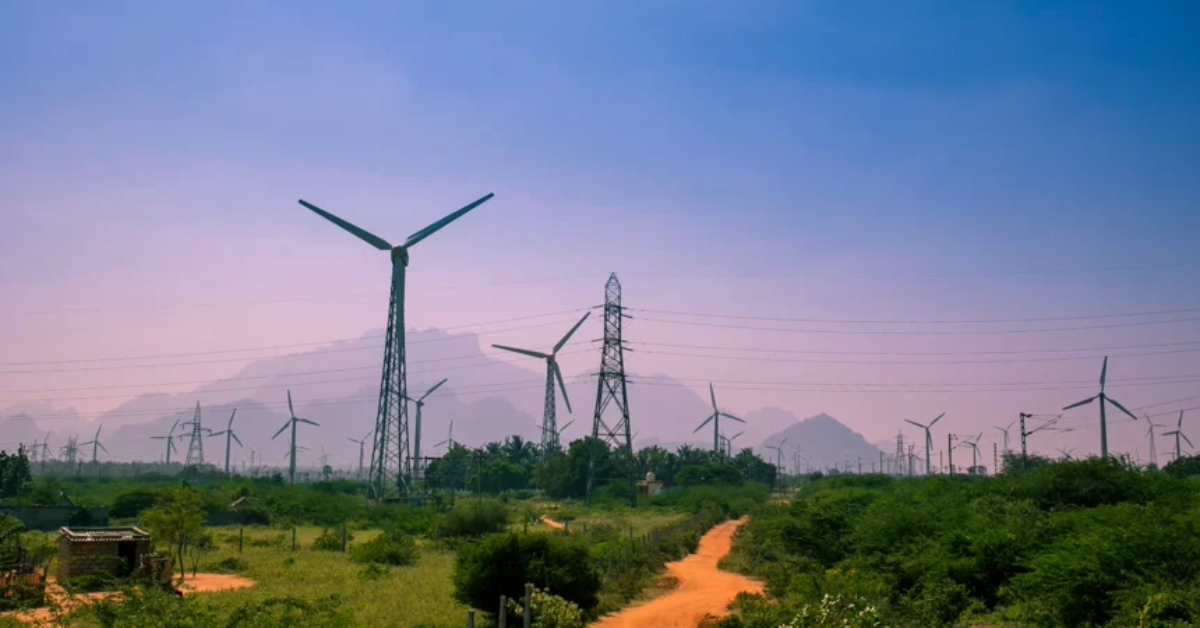ISO-NE uses PLEXOS for Clean Energy Economic Planning
ISO New England (ISO-NE) recently published their Economic Planning for the Clean Energy Transition (EPCET) pilot study overview and initial...
6 min read
 Team Energy Exemplar
:
March 15, 2024
Team Energy Exemplar
:
March 15, 2024

*Results shared in this case study are preliminary and are not intended to be used as the official EPCET results, or to be cited as such.
ISO New England is the Regional Transmission Operator (RTO)/ Independent System Operator (ISO) for the six states of New England – Connecticut, Maine, Massachusetts, New Hampshire, Rhode Island, and Vermont. The ISO serves three critical roles – grid operation, market administration, and power system planning. As an ISO, ISO New England also has a specific charge to maintain reliability.
As of June 2023, ISO New England had 350 dispatchable generators in the region, with 31,500 MW of generating capacity. At this time, the ISO also had 31,000 MW of proposed generation in the queue (mostly made up of wind, solar, and storage proposals) and 7,000 MW set to retire in the next few years. ISO New England’s transmission system also has ties to other power systems. There are AC ties to Canada, and DC ties to Canada and New York.
Patrick Boughan is the Supervisor of Economic Studies and Environmental Outlook at ISO New England. He and his group perform the Economic Studies, which are ISO New England’s name for their long-range studies. He and his group also recently worked on the Future Grid Reliability Study – which he describes as a process where they took all their old assumptions used for studies like this, and threw them out, starting a completely new process. Boughan says that this is essentially what it’s like to work at an ISO right now. Policy is changing the grid so dramatically that ISOs are having to take all the ways they used to do business and completely re-invent them.
In ISO New England, much of the generating capacity of nuclear, oil, and coal has shifted to natural gas. In the next 20 years, much of that generating capacity will then shift to renewables. This will prove to be a dramatic change in the makeup of ISO New England’s generation stack. On top of that, the ISOs load will nearly double in that same period of time due to electrification.
Another challenge is that by the mid-2030s, ISO New England will no longer be a summer-peaking region, instead, load will likely peak in the winter due to the electrification of heating. Lastly, it’s important to reiterate that the charge of the ISO is to maintain reliability and affordability. However, because ISO New England covers several states, and because almost everything being done to prevent climate change is happening through the electrical grid, the ISO has become the de facto central organization managing climate change in the region – which is not technically the ISO’s charge and presents yet another challenge to the organization.
To address the challenges and changes that climate change policy has created, and as part of throwing out their old assumptions and adopting new processes, ISO New England changed the tariff about how long-term studies are performed. Under the new tariff, stakeholders can still submit requests, but the ISO will be performing three repeated reference scenarios to bring more structure to the process, and to make results more repeatable and comparable as time goes on.
As a part of changing how ISO New England approaches these long-term studies, the organization also decided to change the tool they were using. As the organization began to look at a system that was so far removed from how the grid operates today, the team found that their work was being constrained by their previous solution. It became clear that their previous solution was optimized for a thermal grid, and it felt like wind, and solar, and batteries were cool bells and whistles that were add-ons to the main thermal engine tool. And, as the grid transitions to being a renewable dominated system, the fact that those were add-ons was becoming a barrier to effectively modeling and performing the ISO’s required studies. After evaluating options, ISO New England selected PLEXOS to perform these studies going forward. The team found that the core objects and constraints design of PLEXOS allows them the flexibility required to look at these new electric systems on the grid.
The Future Grid Reliability Study (which was ISO New England’s previous economic study), identified areas for improvement, and the need for a shift in software solutions. With a new tariff, and PLEXOS as a new solution for performing analyses, Patrick Boughan and his team set out to work on the Economic Planning for the Clean Energy Transition (EPCET) study. The goal of the EPCET is to prepare the ISOs models, tools, and processes so that informative and actionable results can be more readily produced in future Economic Study cycles. The EPCET pilot study focuses on three key scenarios:
The Policy Scenario is perhaps the most complex, and the results provide extremely interesting insight into the economic future of the grid once regional energy policy goals are implemented and achieved. To perform the initial Policy Scenario, ISO New England used PLEXOS’ Capacity Expansion tool – working iteratively between the LT tool and the ST and MT tools.
*The following results are preliminary and are not the official results of the EPCET and are not intended to be cited as such. However, they are very interesting and provide a meaningful start to building the foundation of the future Economic Studies of ISO New England.
One quantifiable way to envision what the end of policy implementation will mean is to look at net load. The preliminary EPCET policy scenario shows that daily net load will increase exponentially over the next 30 years. Currently, ISO New England’s daily load is approximately 16,000 MW, and the peak load is 28,000 MW. By around the year 2050, when policies have gone into effect, the peak load increases to 50,000 MW. What’s more? In that same year, the system will also come close to zero, so the grid system of the future must be capable of operating at close to 600 MW, but also at the peaking load of 50,000 MW – a huge range in load serve.
Using the PLEXOS Capacity Expansion tool, the team also analyzed the system build out to the year 2050 (or until policies are implemented). The preliminary results show that the system will favor the build out of resources in the following order: offshore wind, batteries, PV, and lease-land based wind. (Land based wind is actually the most economic resource, but ISO New England lacks land for wind generation, but has quite a bit of ocean space for offshore wind generation.) Looking at the breakdown of the buildout of these generation sources in comparison to some of ISO New England’s current operating statistics once again points to just what a dramatic shift implementing climate change policies will cause for the grid.
In 2050, the preliminary results show 36 GW of offshore wind – keep in mind, the current peak load for ISO New England is 28 GW. So, the capacity of offshore wind in 2050 will exceed the current peak load for the region. In 2050, there will be 26 GW of battery capacity, 26 GW of solar capacity, and 7 GW of land-based wind. Excluding offshore wind, that is a total of 59 GW of capacity. Now compare that to the daily load of ISO New England in June 2023 which was 13 GW – that is a staggering comparison. The preliminary results of the EPCET Policy Scenario show a nearly incomprehensible shift in the nameplate capacity values for the entire ISO New England system.
Initial results of this analysis also show that annualized build costs will peak at $16 billion a year by 2050, and that the system will switch to a winter peaking system in the early or mid 2030s. Another key takeaway is that in the year 2050, it appears that a fairly significant proportion of fossil fuels will still be required to meet load on winter days that are cold, cloudy, and windless. Additionally, natural gas alone will probably not suffice, and light oil and/ or legacy heavy oil/ coal units will most likely be required on days like this.
Unsurprisingly, the preliminary results indicate that the present transmission system is incapable of handling this vast increase in load and capacity. The transmission system will also require buildout to enable this transition. When examining the requirements for battery drawdown over a 7-day, 14-day, and 21-day period in the winter months, the EPCET preliminary Policy Scenario results show that 1TW of storage is required for a 7-day, the amount of storage roughly doubles for 14 days at 2 TW, and the system requires almost 3 TW of storage for a 21-day period. “Storage” can also consist of reservoirs, power trading, etc., but the takeaway is that 3 GW of storage required to cover a 21-day period is a tremendous amount of storage.
As part of the Policy Scenario Analysis, ISO New England also looked at the carbon reduction ton earned for each dollar spent, by resource type. The preliminary results show that initially, wind and PV provide a good return on investment, but that batteries do not provide a very economical return because initially there are so many fossil fuel resources on the system, that units are arbitraging gas and batteries.
In the middle period of the analysis (the mid 2030s) all technologies provide a pretty good return on investment. However, as time progresses, it gets to a point where there isn’t much carbon generation, and meeting the increased level of load solely with intermittent resources becomes challenging – it is at this point that batteries offer a good return on investment. As time continues to progress, and curtailment increases, the last 10 – 15% of renewable build becomes extremely expensive.
While these results are only preliminary, they offer valuable insight into the future of ISO New England’s grid. Additionally, they indicate that PLEXOS will act as a satisfactory and effective solution to continue performing critical economic studies into the future.
If you’re ready to explore how PLEXOS can help you prepare for a dramatically different grid, reach out to our team and we’ll connect you with an expert. The grid is changing, whether you’re ready or not.

ISO New England (ISO-NE) recently published their Economic Planning for the Clean Energy Transition (EPCET) pilot study overview and initial...

ReNew, the largest Pure-Play Renewable Energy Company in India

Originally published on Utility Dive on October 7, 2024